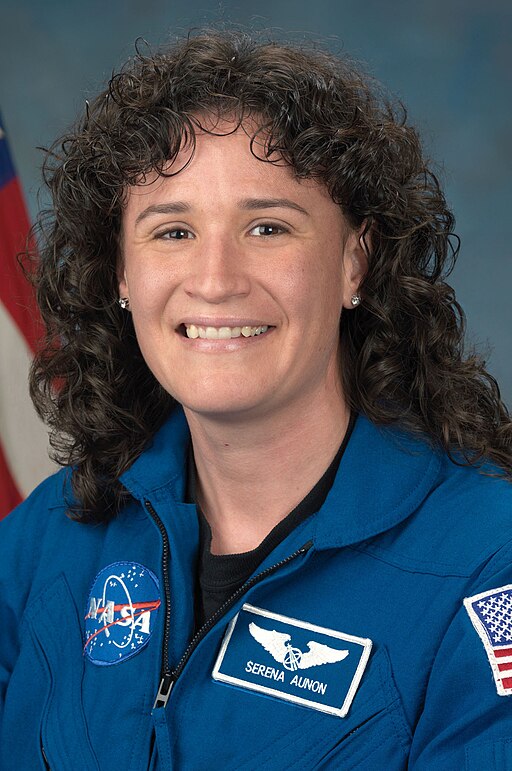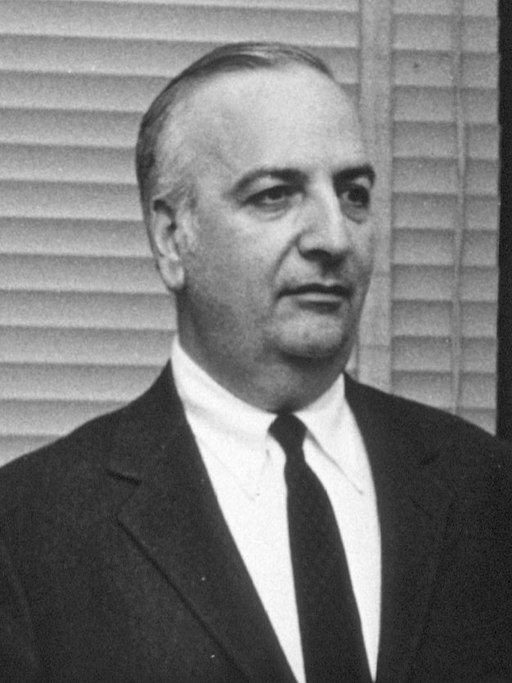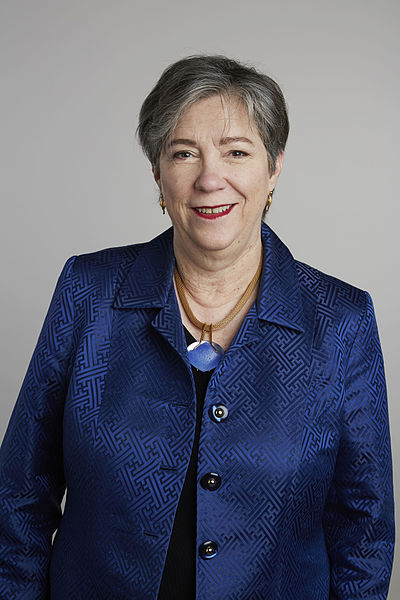This Month in Science and Medicine History: October 2024
by Leigh Ann Gardner (MSTP Senior Grants Manager)

October 4: On October 4, 2018, Expedition 57 to the International Space Station launched, and included in its flight crew Dr. Serena Auñón-Chancellor, the first Hispanic physician to travel to space. Born in 1976, Auñón-Chancellor is a Cuban American (her father is a Cuban exile) who received her M.D. from the University of Texas Health Science Center at Houston. Following her internal medicine residency, Auñón-Chancellor also completed an aerospace medicine residency. She was initially hired as a physician by NASA as a flight surgeon, and she completed her astronaut training in 2011. As part of both Expedition 56 and Expedition 57, Auñón-Chancellor spent 197 days in space. Following her time at the International Space Station, Auñón-Chancellor began working at the LSU Health New Orleans School of Medicine as part of the Internal Medicine Residency program, although she continues to work with NASA. You can learn more about her experiences here.
 October 10: On October 10, 1980, the Nobel Prize Committee announced the recipients of the 1980 Nobel Prize in Physiology or Medicine would be awarded jointly to Baruj Benacerraf, Jean Dausset, and George Snell for their discoveries about the “genetically determined structures on the cell surface that regulate immunological reactions.” One of these recipients, Dr. Benacerraf, is our focus in this entry. Born in Venezuela in 1920 to Jewish parents, he and his family moved to Paris in 1925. In 1940, he emigrated to the United States. He attended medical school at the Medical College of Virginia, the only school that accepted him as he was Jewish. After receiving his M.D. and completing service in the U.S. Army, he became a researcher at the Columbia University College of Physicians and Surgeons, where he started his immunological research. In his biographical essay for the Nobel committee, he claims his interest in immunology and allergic phenomena was due to suffering from bronchial asthma as a child. During his career, he worked on different fields of hypersensitivity, and his research led him to understand how genes determine immune responses. Following a long career, Benacerraf died in 2011 in Massachusetts. You can read the 1980 press release about the Nobel Prize here or his biography here.
October 10: On October 10, 1980, the Nobel Prize Committee announced the recipients of the 1980 Nobel Prize in Physiology or Medicine would be awarded jointly to Baruj Benacerraf, Jean Dausset, and George Snell for their discoveries about the “genetically determined structures on the cell surface that regulate immunological reactions.” One of these recipients, Dr. Benacerraf, is our focus in this entry. Born in Venezuela in 1920 to Jewish parents, he and his family moved to Paris in 1925. In 1940, he emigrated to the United States. He attended medical school at the Medical College of Virginia, the only school that accepted him as he was Jewish. After receiving his M.D. and completing service in the U.S. Army, he became a researcher at the Columbia University College of Physicians and Surgeons, where he started his immunological research. In his biographical essay for the Nobel committee, he claims his interest in immunology and allergic phenomena was due to suffering from bronchial asthma as a child. During his career, he worked on different fields of hypersensitivity, and his research led him to understand how genes determine immune responses. Following a long career, Benacerraf died in 2011 in Massachusetts. You can read the 1980 press release about the Nobel Prize here or his biography here.
 October 15: John Morgan, co-founder of the first medical school in the United States, died on October 15, 1789. Born in Philadelphia in 1735, Morgan graduated from the College of Philadelphia (now known as the University of Pennsylvania) in 1757. During the Seven Years’ War, he served in the British Army as a surgeon on the western frontier in the United States. Following his service, he studied medicine at the University of Edinburgh. After his graduation in 1763, he traveled through Europe, practiced medicine in Paris, and was elected to the Royal Academy of Surgery in Paris, the Royal College of Physicians in London, and the Royal College of Physicians in Edinburgh. In 1765, he and William Shippen, also a graduate of the University of Edinburgh, founded the College of Philadelphia Medical School, which is now known as the Perelman School of Medicine at the University of Pennsylvania. Backing the colonists during the American Revolution, the Continental Congress named him “Director-General to the Military Hospitals and Physician-in-Chief to the American Army” in 1775. He was held responsible for the high mortality rate in the army, dismissed from his post in 1777, and later absolved of wrongdoing by President Washington and Congress. He died a recluse in 1789. You can learn more about Morgan here. You can also read his 1776 book, A Recommendation of Inoculation, here.
October 15: John Morgan, co-founder of the first medical school in the United States, died on October 15, 1789. Born in Philadelphia in 1735, Morgan graduated from the College of Philadelphia (now known as the University of Pennsylvania) in 1757. During the Seven Years’ War, he served in the British Army as a surgeon on the western frontier in the United States. Following his service, he studied medicine at the University of Edinburgh. After his graduation in 1763, he traveled through Europe, practiced medicine in Paris, and was elected to the Royal Academy of Surgery in Paris, the Royal College of Physicians in London, and the Royal College of Physicians in Edinburgh. In 1765, he and William Shippen, also a graduate of the University of Edinburgh, founded the College of Philadelphia Medical School, which is now known as the Perelman School of Medicine at the University of Pennsylvania. Backing the colonists during the American Revolution, the Continental Congress named him “Director-General to the Military Hospitals and Physician-in-Chief to the American Army” in 1775. He was held responsible for the high mortality rate in the army, dismissed from his post in 1777, and later absolved of wrongdoing by President Washington and Congress. He died a recluse in 1789. You can learn more about Morgan here. You can also read his 1776 book, A Recommendation of Inoculation, here.
 October 21: Have you ever enjoyed Pop Rocks, Tang, or Cool Whip? Have you ever wondered who invented such delicacies? It was William A. Mitchell, food chemist, born on October 21, 1911, in Minnesota. Unafraid of hard work, Mitchell worked at the American Sugar Beet Company on overnight shifts during high school, and also worked as a carpenter to earn tuition to Cotner College in Nebraska. While working in a lab during graduate school, he was burned in a lab explosion at the Agricultural Experiment Station in Nebraska. Following his recovery, he began his career as a food chemist at General Foods. While there, he developed a substitute for tapioca which was used to help feed soldiers. While trying to invent a self-carbonating soda in 1956, Mitchell created what is now Pop Rocks, which was patented in 1961. In 1957, he developed Tang Flavor Crystals, which NASA began using in 1962 to disguise the flavor of water on the spaceship. In 1967, Mitchell invented quick-setting Jell-O and Cool Whip, and Cool Whip quickly became the most profitable product line in the company. Mitchell retired in 1976, having received 70 patents in his career. You can learn more about Mitchell here.
October 21: Have you ever enjoyed Pop Rocks, Tang, or Cool Whip? Have you ever wondered who invented such delicacies? It was William A. Mitchell, food chemist, born on October 21, 1911, in Minnesota. Unafraid of hard work, Mitchell worked at the American Sugar Beet Company on overnight shifts during high school, and also worked as a carpenter to earn tuition to Cotner College in Nebraska. While working in a lab during graduate school, he was burned in a lab explosion at the Agricultural Experiment Station in Nebraska. Following his recovery, he began his career as a food chemist at General Foods. While there, he developed a substitute for tapioca which was used to help feed soldiers. While trying to invent a self-carbonating soda in 1956, Mitchell created what is now Pop Rocks, which was patented in 1961. In 1957, he developed Tang Flavor Crystals, which NASA began using in 1962 to disguise the flavor of water on the spaceship. In 1967, Mitchell invented quick-setting Jell-O and Cool Whip, and Cool Whip quickly became the most profitable product line in the company. Mitchell retired in 1976, having received 70 patents in his career. You can learn more about Mitchell here.
 October 27: Molecular biologist Susan Lindquist, known for her investigations of protein folding, died on October 27, 2016. Born in Chicago in 1949, Lindquist received her undergraduate degree from the University of Illinois and received a PhD in biology from Harvard University in 1976. Following a post-doc at the American Cancer Society, Lindquist became a professor at the University of Chicago, where her use of yeast as a model to study how heat shock proteins regulate gene expression and protein folding was considered pioneering. In 2001, Lindquist moved to MIT, where she served as the director of the Whitehead Institute for Biomedical Research, being one of the first women to head a major research organization. She was awarded the President’s National Medal of Science, the Dickson Prize in Medicine, the FASEB Excellence in Science Award, the Vanderbilt Prize for Women’s Excellence in Science and Mentorship, and the Otto-Warburg Prize. You can learn more about her career and accomplishments here.
October 27: Molecular biologist Susan Lindquist, known for her investigations of protein folding, died on October 27, 2016. Born in Chicago in 1949, Lindquist received her undergraduate degree from the University of Illinois and received a PhD in biology from Harvard University in 1976. Following a post-doc at the American Cancer Society, Lindquist became a professor at the University of Chicago, where her use of yeast as a model to study how heat shock proteins regulate gene expression and protein folding was considered pioneering. In 2001, Lindquist moved to MIT, where she served as the director of the Whitehead Institute for Biomedical Research, being one of the first women to head a major research organization. She was awarded the President’s National Medal of Science, the Dickson Prize in Medicine, the FASEB Excellence in Science Award, the Vanderbilt Prize for Women’s Excellence in Science and Mentorship, and the Otto-Warburg Prize. You can learn more about her career and accomplishments here.
Please acknowledge the Vanderbilt University MSTP Program if you share this information.
